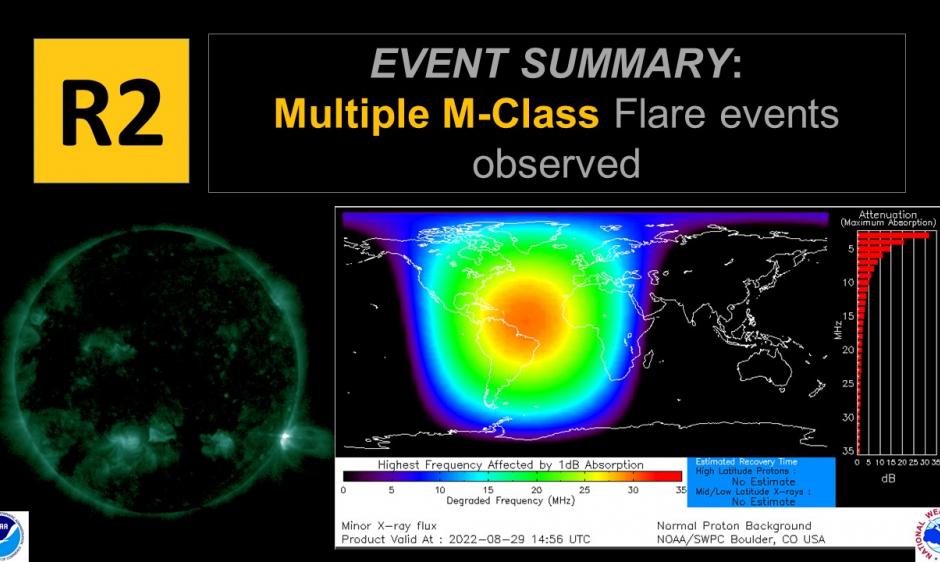
Active NOAA SWPC Region 3088, that recently rotated just beyond the western solar limb, continued to produce multiple M-class solar flares (R1-R2 radio blackouts). The largest of these flares, an M8 flare, occurred at approximately 29/1108 UTC (29 Aug, 0808 EDT). Additional flare activity included an M4, M3, and a long duration M2 flare. Some effects from these events could include: limited blackout of HF radio communication on the sunlit side of the Earth, loss of radio contact for tens of minutes, and/or degradation of low-frequency navigation signals for tens of minutes. The disruption to the ionosphere could also impact amateur radio operator's signal, causing it to fade at certain frequencies.
As Region 3088 continues to propagate around the western limb, these events should occur less and less. We are, however, continuing to monitor NOAA SWPC Region number 3089 that is now nearing the center of the solar disk. Stay tuned to this website for additional updates and forecasts.